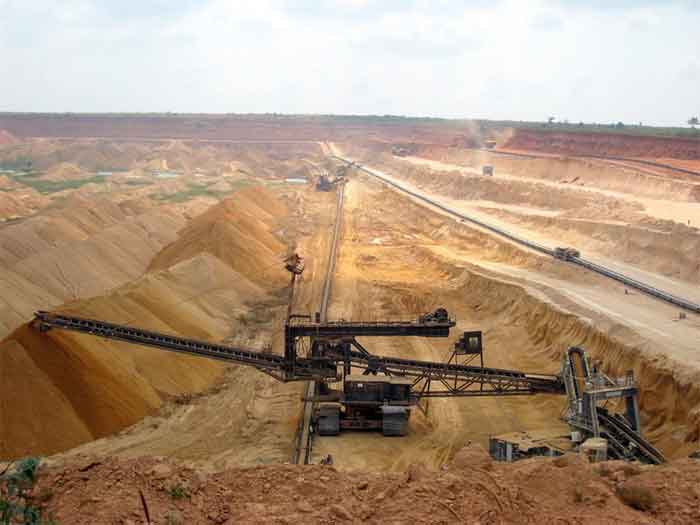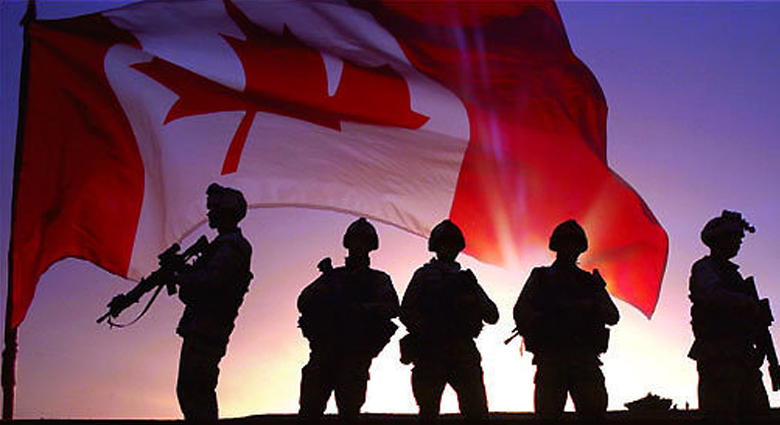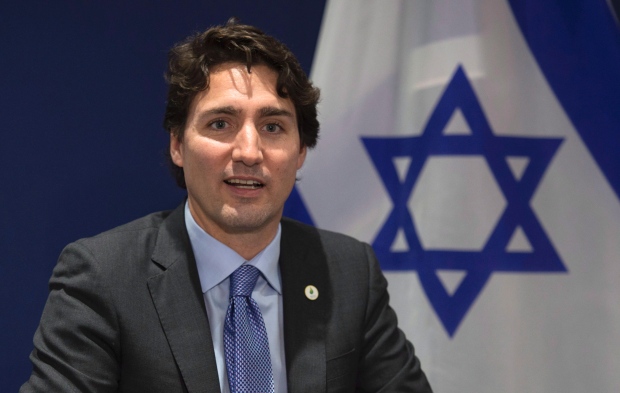
Canada was born of empire and still thrives within that milieu. It is the progeny of French and British imperial quests in the ‘New’ World and is accompanied by its siblings within the Five Eyes, the most influential being the United States. Canada’s creation out of mostly British imperial interests carried all the factors of imperialism internally as it developed across the North American continent. Currently, it still acts within the imperial prerogative, both domestically with its indigenous population and overseas with various other countries, frequently under the aegis of the U.S., but often enough acting on its own accord.
The ethnic cleansing of Canada
During this summer’s heat wave and firestorms I started rereading several books about the history of the indigenous population in Canada, mostly concerned with western Canada, but referencing previous events in the east. Two books dealt with the problems of colonial settler movements in British Columbia: “Contact and Conflict” [1] is an earlier work still widely referenced; and “Making Native Space” [2] is more contemporary, highlighting the efforts of establishing – literally – “native space” meaning the “reservations” set aside for indigneous use (think apartheid).
A third book, “Clearing the Plains”, [3] highlighted the colonial settlement of the prairie provinces, a hard hitting work that demonstrates the ethnic cleansing/genocide nature of Canadian settler colonialism. The final work, “Guns,Germs, and Steel”, [4] is much more widely known and while not discussing British Columbia or Canada directly, does provide a strong background to the whole ‘business’ of colonial settlerism and how it operates.
I say operates in the present tense, as the racial conflict from the early colonial years still manifests itself today. While I was involved with the rereading, several significant events occurred that reinforced all that the authors had said, and demonstrated that racism, ethnic cleansing, and genocide are all recent and/or ongoing occurences in Canada and British Columbia specifically.
Contemporary B.C.
Two incidents involved many aspects of contemporary concern – racism, the environment, government/police power, energy, native land rights – the latter which is a very specific concern within British Columbia as very little of the province’s land has been ceded by the indigenous population. Demonstrators at Fairy Creek on Southern Vancouver Island are attempting to block logging of one of the few remaining old growth forests on the B.C. coast. Farther north, the Wet’suwet’en are using blockades to try and stop the destruction of their formerly pristine wilderness by the Coastal GasLink Project which aims to transport fracked gas from northeast B.C. for export to Asia.
In both cases, the police forces have reacted in a militarized manner supporting the interests of the corporations and governments over any interests in the environment and ignoring the reality that the lands they are acting on are unceded indigenous lands. The courts, while offering a small temporary success to the Fairy Creek protesters, have mostly sided with the corporations, and the police tactics of forced and violent removals and arrests.
The incident that struck me the hardest was the discovery of the 215 unmarked Indian graves at the Kamloops Indian residential School, the final resting place of hundreds of native children taken/kidnapped from their families. Growing up in B.C. I knew about the residential schools. When very young it was simply a benign reference. Later, as I began to discover B.C.’s history, it became more and more a cruelty to families, villages, and native societies as a whole. The last residential school in Canada was closed in 1996 – essentially most of my life was concurrent with the residential school system.
The damage done to indigneous life, to indigneous culture as a whole, and to the thousands of affected individuals and families is enormous, and still ongoing as survivors and their families – their whole nations – struggle with the after effects of the system. The term survivors indicates the brutal reality that thousands of indigenous children did not survive the residential school system, at the same time highlighting that the schools were a malignant imposition onto the culture of the people.
Back to the books
The original white contacts in British Columbia were the fur traders who dealt with the indigenous populations generally in a more restricted contact environment. The natives were considered astute traders but nevertheless were still subject to white racism and British gunboat diplomacy.
“…with gunboats in the background, framed one side of the conversation, such as it was: the other side had more to do with drastic depopulation, cultural change, and inability to fend off the gunboats.” [5]
With the transition to a settler colony, the prejudices and actions accompanying the settlers became significantly more overtly racist.
“The proposition that civilization would bring not only degeneration but also annihilation to the Indians was one that was much more frequently expounded by settlers than it had been by fur traders….By disparaging Indian culture Europeans could convince themselves that little worth would be lost if the Indian way of life was brought to an end.” [6]
The residential schools introduced above were run by various church denominations, funded by the government of Canada,
…1880s, the federal government had adopted an official policy of funding residential schools across Canada. The explicit intent was to separate these children from their families and cultures. In 1920, the Indian Act made attendance at Indian Residential Schools compulsory for Treaty-status children between the ages of 7 and 15. [7]
The churches played a significant role in the cultural genocide of the native population,
…the missionaries were a part of the settlement frontier and required major social change of the Indians….Their aim was the complete destruction of the traditional integrated Indian way of life. The missionaries demanded even more far-reaching transformation than the settlers, and they pushed it more aggressively than any other group of whites. [8]
The land is the culture
With the advent of white settlers, land settlement for resource exploitation (minerals, forestry, fishing) and agriculture effectively cleansed the indigenous populations of B.C. and the prairie provinces of Canada from their territories.
While rereading Diamond’s work, his underlying thesis about the rise of guns, germs, and steel was the establishment of agricultural based settlements, essentially implying that agriculture started the whole system of violent empires through the course of history. Some modern theorists support the same claim.
The corollary is probably more accurate: that when indigenous agriculture was ‘industrialized’ – organized to support a more powerful elite – the violence began domestically with internal control and then expanded out seeking new resources and more power. That puts it in basic terms, but indigenous agriculture existed in most regions of the world. It was not organized on a for profit power and control model, but was – and is – set within the limits of sustainability in the natural environment.
Regardless, the removal of the indigenous populations of B.C. and prairie provinces was accomplished through disease (smallpox, tuberculosis mainly, and other ailments associated with European lifestyles), military and settler violence, and the full range of laws and orders designed to maintain dominance and exclusion over the remaining populations.
British Colonial policy was “dominated by expediency…
…the underlying intention of almost any Native land policy in a settler colony was the dispossession, with as little expense and trouble as possible, of Native people of most of their lands.” [9]
Those lands not dispossessed became the reserves, small plots of land of little importance for any of the resource industries, Canada’s modern apartheid system that still exists and continues to subjugate the indigenous populations regardless of the rhetoric of reconciliation. Talk is important, but it is the land that is the culture.
Back to the future
Canada continues with its mostly racist policies towards its indigenous inhabitants. The Indian Act, now incorporated into the Constitution, and limitations put on other laws and the control exerted by the Department of Indian Affairs denies the equality of rights to land and resources for the indigenous people. As above, violence is still used to control indigenous lands for resource extraction by large corporations.
It is not surprising that this domestic policy is reflected in Canada’s foreign policies. Often viewed as a “peacemaker” – thanks to its own propaganda and the propaganda successes of Lester Pearson’s UN efforts for a peacekeeping force [10] – Canada’s foreign interests are very frequently assisted under more violent terms.
Canada’s imperial foreign policy
Canada’s foreign policy is often seen domestically as being a benefit for the world. Nothing surprising in that as most of the propaganda to support Canada’s foreign affairs is directed at the domestic population, as is done within other countries. Right from the beginning, when Canada was essentially ‘settled’ and the Indian problems had been removed either to the reservations or to the impoverished centers of major towns and cities, Canada’s imperial role, under British guidance, continued.
Canada has never lost the cultural ties to the British that promote imperial military adventurism overseas. Those links did weaken, but the neighbourly presence of the United States and the increasing encroachment of U.S. affairs binding Canada to the U.S. have directed Canada – willingly for the most part – to support U.S. foreign policies. It is not always military activities binding the two countries. NATO, NAFTA, NORAD and other agreements make Canada an effective part of the U.S.empire.
Canada’s contemporary foreign policy events highlight its attachments to the U.S. empire, but also its willingness to act on its own parallel interests. Canada supported NATO in its bombing of Serbia, the bombing of Libya, and its occupation of Afghanistan. It has recently organized the “Lima Group”, a collection of right wing Latin American governments willing to harass and sanction Venezuela while supporting a “government in exile” led by U.S. puppet Juan Gaido. Now that “Lima” has departed from the group, it has not been active in current events.
Continuing with Latin America, there are two large examples of imperial reach. One of them is rather understated – the support Canada provides to its mining companies operating within other countries, buttressed by trade agreements, subsidies through foreign “aid”, and through “security cooperation” with the governments involved.
Haiti is the prime example of Canadian imperial interference. Food was part of the program: in order to maintain the imperial legacy in Haiti, Canada played a major role in eliminating a native pig species, forcing the importation of hogs from Canada and the U.S.; Canada supported the removal of tariffs on rice, allowing foreign rice – cheaply subsidised – to flood the market and devastate the local rice growers. Food dependency not being enough, Canada assisted in deposing the popularly elected Jean-Bertrand Aristede.
In other affairs, Canada supports sanctions against Russia, based mainly on U.S. and British foreign policy objectives. Only recently, Canada embroiled itself in U.S. foreign affairs by arresting and holding Meng Wanzhou for extradition to the U.S. on trumped up bank and wire fraud charges. Meng was released after some back room negotiations between Canada and the U.S., more than likely propelled by ‘realpolitik’ than any generosity or humanitarian considerations.
Israel
Not last, and not least, but highly significant, is Canada’s support of Israel. While officially holding to the two state solution, Canada does not care to understand, wilfully, that a two state solution is all but impossible. The wilful ignorance continues with Canada’s parliament passing an anti-BDS motion,
In CJPME’s chats with MPs after the vote, many MPs admitted they knew virtually nothing about the BDS movement, and what motivates it. [11]
Fortunately, the Canadian populace is well ahead of the government with concerns about the illegality of Israel’s settlement policies, its near starvation rules placed on food imports to Gaza, and the ongoing violence and expulsions of Palestinians in the West Bank – sounds familiar this far into the critique.
A series of recent polls show that the majority of citizens support BDS and the application of international law and human rights in part through the jurisdiction of the ICC.[12] Israeli activities in Sheik Jarrah and the military actions against Gaza, while not highlighted in the mainstream media, were important factors in the general trend of the polls.
The Anglo empire rolls along
Canada, born of empire, continues to be an active imperial participant, both in its own endeavours and in support of ongoing British and U.S. imperial adventures. Along with the British sponsored “outpost” of Israel in the Middle East among all its other imperial concerns, Canada’s imperial drive – at home and abroad – is as strong as ever.
[1] Fisher, Robin . Contact and Conflict – Indian-European Relations in British Columbia. 1774-1890. UBC Press, Vancouver, 1977, 1992.
[2] Harris, Cole. Making Native Space – Colonialism, Resistance, and reserves in British Columbia. UBC Press, 2002.
[3] Daschuk, James. Clearing the Plains – Disease, Politics of Starvation, and the Loss of Aboriginal Life. University of Regina Press, 2013.
[4] Diamond, Jared. Guns, Germs, and Steel – The Fates of Human Societies. . W. W. Norton & Company,New York, 1999.
[5] Harris, p. 107.
[6] Fisher, pp. 87-8.
[7] Residential School History https://nctr.ca/education/teaching-resources/residential-school-history/
[8] Fisher, pp.144-5.
[9] Harris, p. 14.
[10] Engler, Yves. Lester Pearson’s Peacekeeping: The Truth May Hurt. Fernwood Publishing, Halifax, Nova Scotia, CA. 2012.
[11] BDS: Informing the Parliamentary Debate. February, 2016. https://www.cjpme.org/fs_196
[12] https://www.cjpme.org/survey and https://www.cjpme.org/survey2020
Note: For further reading on Canada’s foreign policy, Yves Engler has written a series of critical books detailing many of Canada’s foreign policy actions that deny Canada’s benign peacekeeper propaganda. See: https://yvesengler.com/yves-books/
Jim Miles is a Canadian educator













































